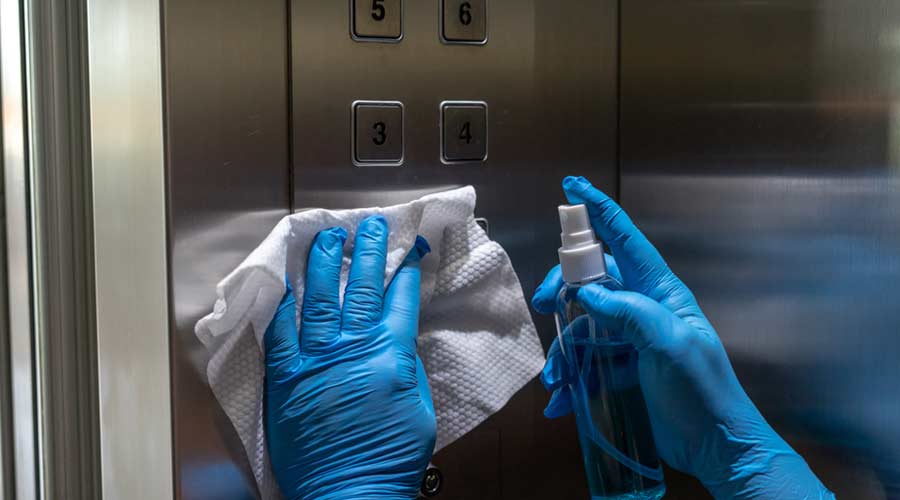
The Americans with Disabilities Act (ADA) has been an invaluable tool for differently abled people. It has also become weaponized by those not necessarily focused on improving access for all, but instead by those who are seeking to monetize even minor ADA violations for their own profit. As a result, the filing of frivolous ADA lawsuits continues to be a nationwide problem. Small businesses are particularly vulnerable, but any-sized operation can become a target, and defending against such a lawsuit — even when the verdict goes in favor of the business — can prove costly, time-consuming and stressful.
The consequences of being found guilty of ADA wrongdoing are significantly more dire, which is why many businesses opt to settle out of court rather than risk going to trial and losing the case. According to Joan Stein, president of Pittsburgh-based Stein Consulting LLC, the Department of Justice (DOJ) can levy fines of $75,000 for the first violation and $155,000 for each subsequent one, not including awarding potential compensatory and punitive damages.
“Cases decided in federal court include payments of fees to attorneys and costs to fix the issue,” explains Stein. “Many of the mistakes and areas of non-compliance are not easily identified to the untrained eye. There are very specific measurements required, and even being 0.5 inches off can result in a violation.”
Charles Moody, president of Solutex, Inc., Sterling, Virginia, recalls an issue that was recently affecting a senior living apartment building customer; one new to Solutex. A county inspector found that the facility’s restroom paper towel dispensers were mounted too high, putting them out of ADA compliance. Moody, who says these were incorrectly installed by that customer’s uniform service vendor, is currently gathering more information about the violation.
Although the most common ADA claims involve public restrooms, Moody doesn’t often see these kinds of violations in the buildings they serve — since many have been newly constructed, with compliance already addressed, inspected, and passed by the general contractor. But issues around toilet tissue and paper towel dispensers do arise when a customer decides to change to a new dispenser system, making it important for the distributor to provide guidance around meeting ADA regulations.
Still, Moody adds, unless it’s glaring, most mistakes go unnoticed and unaddressed, increasing the facility’s chances of incurring a violation or even a lawsuit. Stein, whose firm provides comprehensive ADA consulting services, says she encounters myriad misperceptions that put facilities at risk. The top three? Believing that the facility is “grandfathered in”; that there are no disabled people using the facility; and that there’s nothing to worry about because they’ve never been sued.
So, why should jan/san distributors ensure they’re on top of ADA requirements, helping facilities prevent compliance violations or remedy existing ones?
“Because even though they are not regulated by the ADA standards, the people who file the ADA lawsuits around the country will sue everyone involved,” says Stein.
ADA and Dispensers
Before delving into the specific ADA regulations pertaining to paper towel and toilet tissue dispensers, it’s worth keeping in mind the approach taken by Allen Rathey, founder of the 501(c)(3) Indoor Exposure Index (INDEX) and director of the Indoor Health Council (IHC). Headquartered in Nampa, Idaho, both are focused on providing timely information, education and training to help facilities better implement cleaning for health. INDEX also defines and measure exposures to environmental pollutants, chemicals and other hazards.
“Restrooms are ambassadors for a business,” says Rathey. “They either send a subliminal welcoming message or a subliminal go-away message. The spirit of proper ADA compliance sends a welcoming message. It should be the canary in the coal mine for all restroom users and maintainers to promote functional, accessible, convenient, not frustrating, restroom usage, care and cleaning.”
Toilet Tissue Dispensers: According to Rathey, the Americans with Disabilities Act requires that these be installed on restroom partition walls no lower than 15 inches and no higher than 48 inches above the floor. Non-recessed dispensers must be at least 12 inches above or below the grab bars for non-recessed dispensers.
Recessed dispensers can be placed behind the grab bars, but these must meet the “precise placement requirements outlined by the U.S. Access Board”. From the center point of the dispenser, they should be located 7 to 9 inches in front of the toilet.
As for allocating clear space in front and on the sides of the dispenser, Rathey says the ADA doesn’t specify the number of inches required.
“Instead, the ADA requires that the toilet tissue dispenser be within reach range and accessible to individuals with disabilities,” he explains. “Additionally, the dispenser should not obstruct the maneuvering space, or the clear floor space needed for wheelchair users.”
These requirements were also cited by Dave Thompson, director of education for the Academy of Cleaning Excellence, Orlando, Florida. Additionally, Thompson says users must be able to operate the dispenser with one hand, without having to “tightly grasp any part, being pinched by any moving part or twisting their wrist in any way.”
He also explains that grab bars must be installed between 33 and 36 inches from the floor and next to the toilet. Thomspon believes installing two grab bars is a “critical” necessity.
Paper Towel Dispensers: Towel dispensers should be no lower than 15 inches and no higher than 48 inches above the floor, as determined by ADS regulations. In most cases, these also shouldn’t protrude more than 4 inches from the wall, say experts. To accommodate wheelchair access, there needs to be clear floor space of 30-by-40 inches in front of the dispenser, which should be within easy reach for both a forward and a side approach. Additionally, the dispenser should be accessible from any part of the restroom via an unobstructed pathway.
For most paper towel dispensers, determining the ADA-appropriate install location involves measuring “from any part of the dispenser that would require the user to touch it in order to operate the dispenser, such as a crank, lever, emergency feed, etc.,” says Thompson.
For electronic and hands-free dispensers, he recommends distributors work with end users to mount within compliance — measure from the emergency feed on the side of the dispenser to the floor.
“When the dispenser is installed over an obstacle, such as a counter or sink, there should be a max height of 46 inches to the operating part of the dispenser and no more than 24 inches of reach over the obstacle,” Thompson adds.
The same one-handed usage requirements for toilet tissue dispensers also applies to paper towel dispensers.
ADA Considerations When Recommending Products

 The Down and Dirty on Cleaning in Virus Season
The Down and Dirty on Cleaning in Virus Season How Surfactant Use is Expanding in Commercial Cleaning
How Surfactant Use is Expanding in Commercial Cleaning